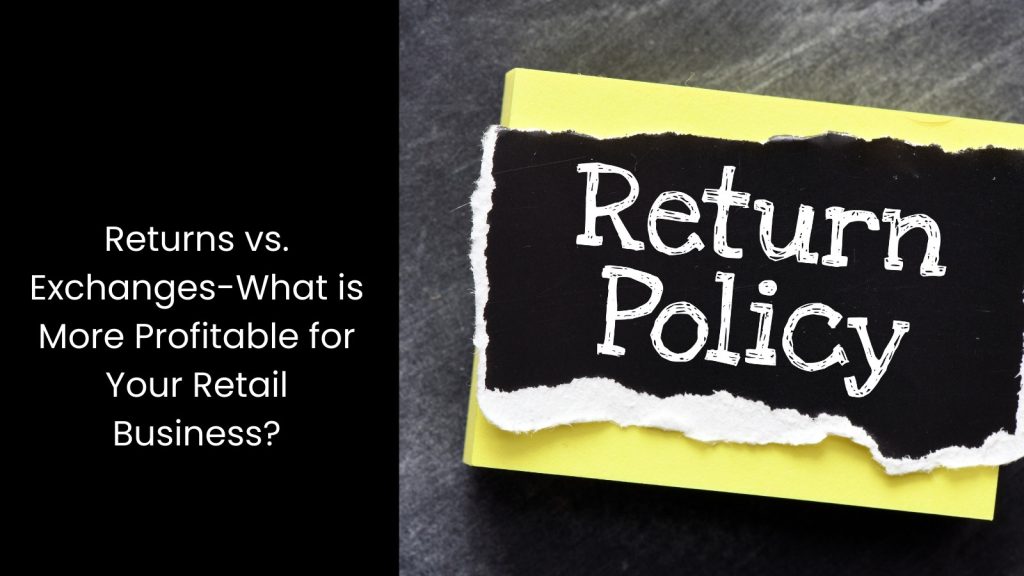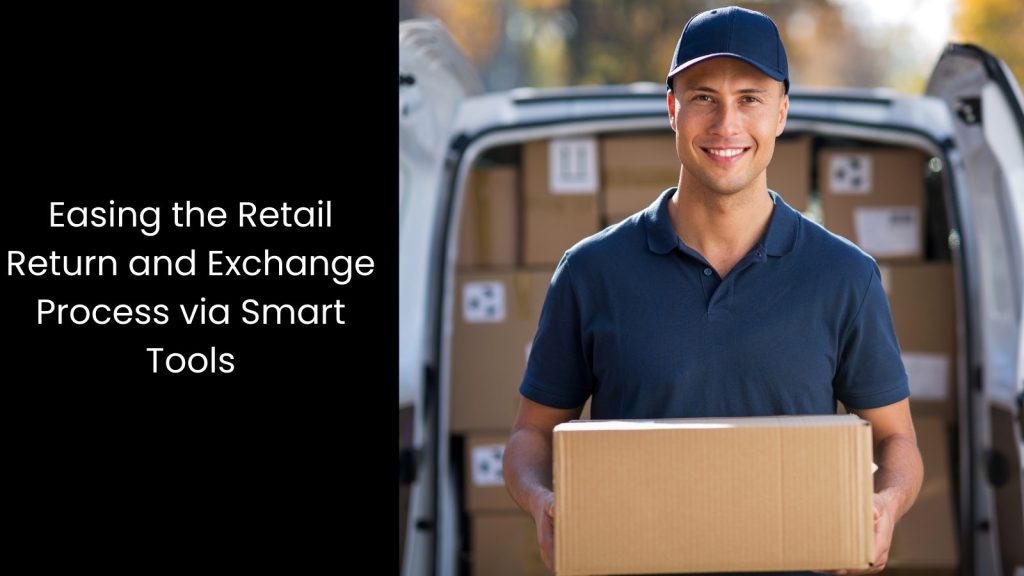It is a known fact that businesses globally happen to lose over $200 billion due to returns and exchanges, and this is a nightmare for retail store management. This is quite similar when it comes to the Singapore retail industry. Customers in Singapore demand hassle-free processes where the returns and exchanges matter, and retailers who can handle these transactions smoothly stand out. Whether it is dealing with product quality issues, wrong sizes, or simply a change of mind, the ability to manage returns and exchanges efficiently impacts both customer satisfaction and a store’s bottom line.
This article explores how to handle returns and exchanges in a retail store.
We will look into
Returns vs. Exchanges-What is More Profitable for Your Retail Business?

- In the retail business, returns and exchanges each play a unique role in handling customer satisfaction and managing post-sale processes.
- A return occurs when a customer gives back a product and requests a refund for the purchase price. Typically, this signals dissatisfaction with the product or that it did not meet the customer’s expectations, and this leads them to want their money back.
- Exchanges, on the other hand, involve a customer swapping their original item for a different one in your catalogue. Exchanges usually happen because of issues like an incorrect size, colour, or even a product defect, and they may also include warranty-related replacements.
- Unlike returns, exchanges give retailers a valuable opportunity to retain sales revenue and maintain customer relationships. With a clear return policy and an easy-to-follow process for exchanges, businesses create a smooth experience for customers who want to resolve their issues while avoiding the loss of sales revenue.
- In many cases, exchanges prove to be more profitable than outright returns since they enable the retailer to keep the initial revenue and, at times, even generate additional income. When customers choose an alternative product, they might pick an item that costs more or add other items to their cart during the exchange, increasing the transaction value. This scenario allows retailers to turn potential revenue loss into a sale, giving them a second chance to impress the customer and encourage future purchases.
- So, the main point here is that when you manage both returns and exchanges effectively, your retail store in Singapore can improve customer loyalty and maximise profitability in the next layer.
Top Strategies to Manage Returns and Exchanges in a Retail Business

Establishing a Straightforward Policy for Returns
This is a smart strategy for effectively managing returns and exchanges in a retail business, providing clarity and consistency for customers and staff.
So, as we mentioned above, returns involve customers bringing back items they no longer want or need, typically seeking a refund. Exchanges allow customers to replace their item with another, usually due to size, colour, or quality issues.
When a business has a clear policy in place, it sets specific guidelines that outline how and when customers can return or exchange items. This transparency builds customer trust by showing that the business values customer satisfaction and aims to provide a hassle-free experience if they are not completely happy with their purchase.
For an online retailer, where customers cannot physically inspect products beforehand, a straightforward return policy becomes even more important, allowing customers to buy confidently. What is more, a defined policy benefits the business by reducing misunderstandings and ensuring that staff follow consistent steps when handling returns and exchanges, making the entire process more efficient. It also helps streamline reverse logistics, particularly in eCommerce, where shipping companies play a role in facilitating returns.
Ensuring a Smooth and Effortless Process for Returns and Exchanges
Suppose you have established a smooth and effortless process for returns and exchanges. In that case, you do not need to worry about your retail store management in Singapore, as you have already implemented a powerful strategy!
The basic understanding of the same is that it enhances customer satisfaction and strengthens loyalty. When customers know that returning or exchanging items will be easy, they feel more confident purchasing, which can reduce hesitation and increase sales. In today’s retail environment, particularly for eCommerce, customers expect convenience and quick solutions. A seamless return and exchange process minimises customer frustration, creating a positive experience even when a purchase does not work out as planned.
When you design an efficient system, you streamline every step—from initial customer request through to item collection, processing, and fulfilment of the refund or replacement. This not only makes things easier for the customer but also for your business, as a transparent, efficient system reduces the time and costs associated with managing these processes.
As you can see, by making returns and exchanges simple, you can turn what might have been a lost sale into a valuable opportunity to reconnect with the customer, increase order value, and encourage future purchases.
Encouraging Exchange Items as an Alternative to Issuing Refunds
Studies show that when given the option, many customers prefer exchanging for a more suitable product over seeking a refund. Have you heard this before?
Unlike a refund, this approach allows retailers to retain the initial sales revenue, which immediately reduces revenue and potentially signals lost customer interest. Offering exchanges keeps the transaction within your business and strengthens customer loyalty by showing a willingness to meet their needs.
On the other hand, exchanges mean customers’ opportunity to select a higher-priced item or add extra products, increasing the overall order value and turning what could have been a loss into additional revenue. Managing exchanges over refunds also reduces the financial and logistical impacts of processing returned items.
While returns may involve restocking fees and added shipping costs, exchanges often streamline this process by simply replacing the original item. Yes, it presents a win-win situation!
Finding Reasons Behind Product Returns
Do you know that understanding the ‘why’ factor behind customer actions can build loyalty and trust?
In retail, finding out the reasons behind product returns is a powerful strategy to manage returns and exchanges effectively and drive business improvement. When you actively track and analyse why customers return products, you gather insights that reveal underlying issues related to product quality, sizing, functionality, or misleading product descriptions. These insights allow you to address specific problems, helping to reduce future returns.
For example, if a pattern of sizing issues emerges, you can adjust size charts or descriptions to inform customers better, which may prevent similar returns down the line. Similarly, if a product quality concern arises, you can investigate and work with suppliers to improve product standards, avoiding repeat issues and creating a better customer experience.
Likewise, identifying reasons for returns also lets you spot trends that guide product development and refine marketing strategies to meet customer expectations more closely. When customers see that you take feedback seriously, they are more likely to trust your brand and continue shopping with you, even if they previously returned an item.
Recording All Returns, Exchanges, and Refunds
Tracking each return or exchange lets you detect patterns that reveal product issues, customer preferences, or seasonal trends.
For instance, frequent returns on a particular item may signal a quality or sizing issue. This would prompt you to investigate and address the problem with the supplier. This level of insight allows you to refine your product offerings and improve customer satisfaction by preventing recurring issues.
This is where recording of them plays a vital role. Documenting every transaction also helps you identify customer behaviour trends, such as which types of products get exchanged more often or the times of the year when returns spike. With this data, you can better prepare for peak return seasons or adjust your inventory strategies to account for exchange demand, making your stock management more efficient.
You can simplify this process by using a reliable POS system or inventory management software available in the market.
Delivering Exceptional Customer Care
When customers feel valued and respected, they are more willing to return for future purchases, even if they encounter a product issue. It is a proven fact when it comes to retail store management in Singapore’s dynamic landscape.
When you provide responsive, empathetic assistance, you show customers that their concerns matter, which builds trust and goodwill. This approach transforms a potentially negative experience, like a return or exchange, into a positive interaction that encourages customers to stay engaged with your brand.
Exceptional customer care also includes guiding customers through the return or exchange process, ensuring they understand each step and feel supported. This reduces frustration, minimises confusion, and keeps the process smooth and stress-free for both the customer and your team in Singapore.
You may have noticed that high-quality customer service can also increase the likelihood of customers choosing exchanges over refunds, and this will help your business retain revenue. Consistently delivering outstanding care strengthens customer relationships and builds a reputation for reliability and support, attracting new customers and fostering long-term loyalty.
Easing the Retail Return and Exchange Process via Smart Tools

At the heart of effective retail lies a genuine commitment to customer satisfaction. With CRM software supporting return and exchange management, your Singapore retail store can deliver smoother processes and fewer headaches. If you purchase this from an industry expert, you can have a robust CRM solution that includes POS and inventory management capabilities. It is time to ease the burden of return and exchange and deliver an outstanding customer experience to your clientele.

